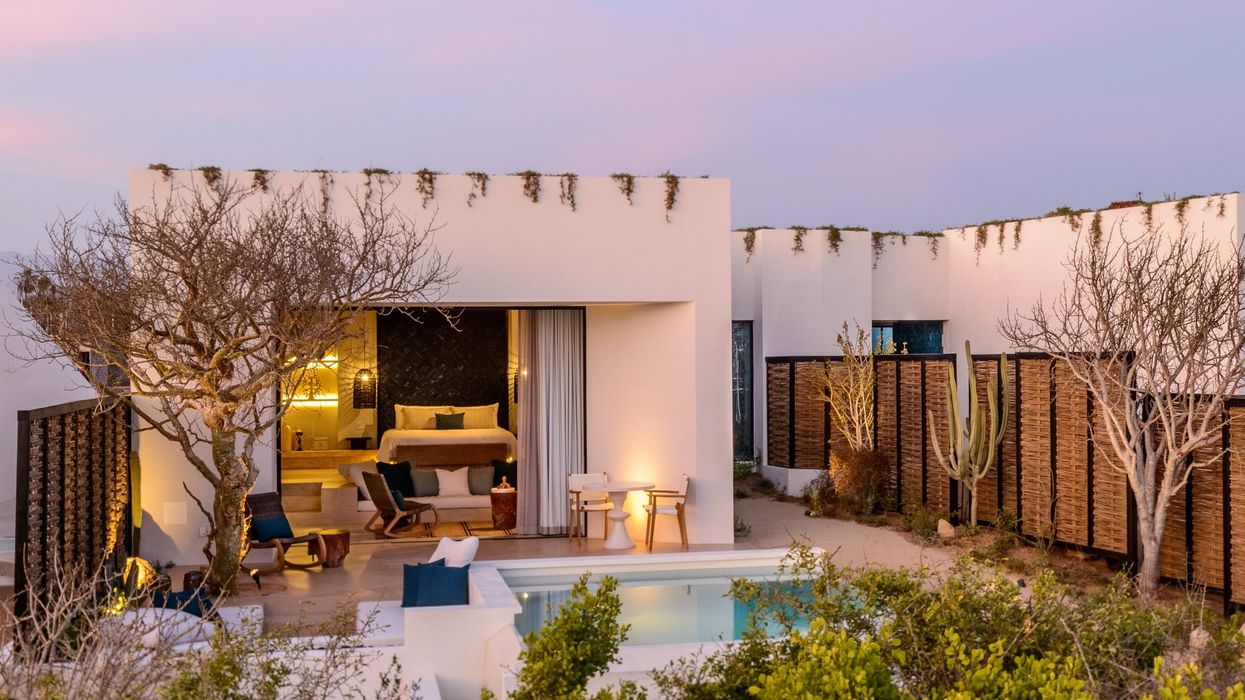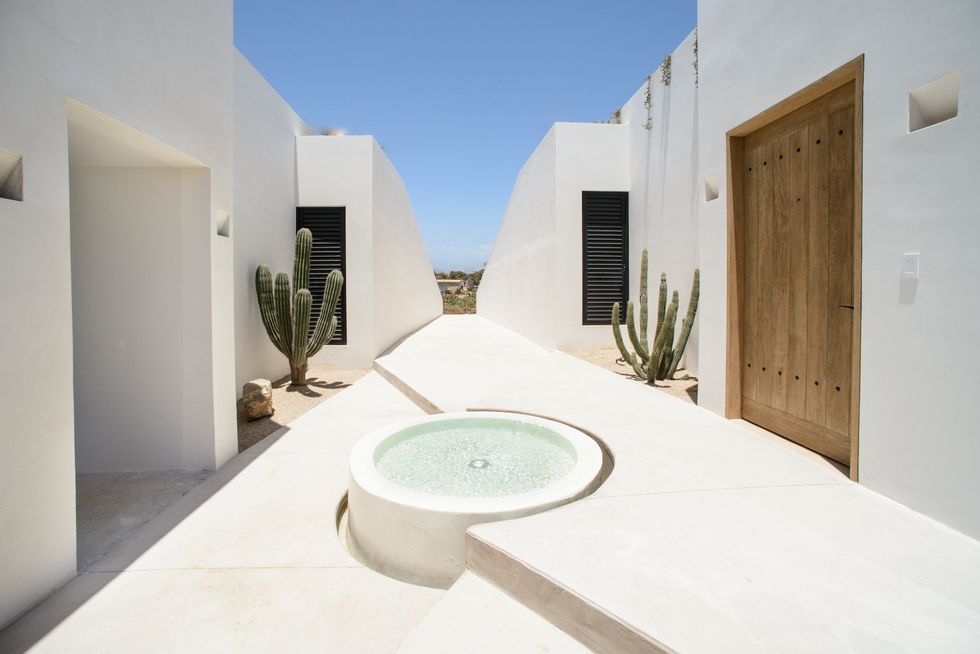
The entrance to Rancho Pescadero is inconspicuous—a mile-long drive down a dirt road and around a short driveway leads to a towering wood door. The door swivels open, revealing a beachfront desert oasis. “The moment you step foot inside you feel the soul of the space,” says Alejandra Templeton, the female Mexican architect Rancho Pescadero hired to spearhead the property’s design overhaul.
Back in the ‘90s, owner Lisa Harper camped and surfed on a small stretch of beach in Baja for 11 months, a brief but effective escape from her life as a retail CEO. The sojourn inspired her to purchase a parcel of land that was once a chili pepper farm but would later become Rancho Pescadero—her 12-room boutique hotel that arguably catapulted tourism in the now popular sleepy region of Todos Santos, Mexico. She closed the property in 2018 and after four years has finally reopened its doors with a much-anticipated expansion and redesign that remains true to Rancho’s secluded spirit (a claim that I personally can attest to, having visited both prior and post-expansion).

Photo: Albert Lewis
The revamped ‘Rancho’ (what locals call it) has a 30,000-square-foot spa (one of the largest in the country), two restaurants with another one on the way, several sprawling botanical gardens, huertas from which chef Sandro Falbo sources all fresh veggies, and 103 rooms (including oceanfront villas with private plunge pools overlooking the Pacific). But here’s what really stuck with me: almost all of the pieces found throughout the boutique property are from Mexico and crafted by local artisans exclusively for Rancho–a decision that is often not the case for a hotel of this size due to logistical constraints.
“It’s easier for us to get in touch with these artisans and it’s important to give value to the work that they do,” Templeton says. “I wouldn’t have it any other way. They’re so happy and proud and let us know how this helps their communities and families.” She adds that it can be challenging for hotels to work with artisans as they don’t always come from a mentality that’s targeted toward larger-scale hospitality spaces. “It’s so rewarding when you can find artisans that are open, understand quality, and are willing to work that way.”

Photo: Albert Lewis
When I ask Templeton what she views as the hallmarks of Mexican craftsmanship, she points to the diversity. “To me as a designer, it gives a beautiful base of tools to choose from and to create an original design.” Within the hotel, guests can discover pieces born from traditional Mexican artisanry, but that they haven't seen before. “You’re not going to go to an artisanal store and see the same things that you would at Rancho. Everything is custom designed and made for the property,” she says.
Ultimately, the decision to work exclusively with local Mexican artisans was made in hopes to echo the spirit of the region in the most authentic way possible. “[An artisanal piece is] never perfect because it’s handmade, but for me, it’s more beautiful that way,” Templeton explains. “I want guests to feel like they’re being transported to Mexico, but not the part of Mexico that’s usually sold to them. It’s real Mexico. It speaks through the things that surround you.”
Ahead, a behind-the-scenes look at the artisanal pieces found around Rancho that give the property its soul and authenticity.
Want more stories like this?
Inside A Baltimore Hotel That's *Almost* Too Much
At Home With Footwear Designer Emme Parsons
These Collectors Filled Their Traditional Japanese Home with Worldly Possessions




